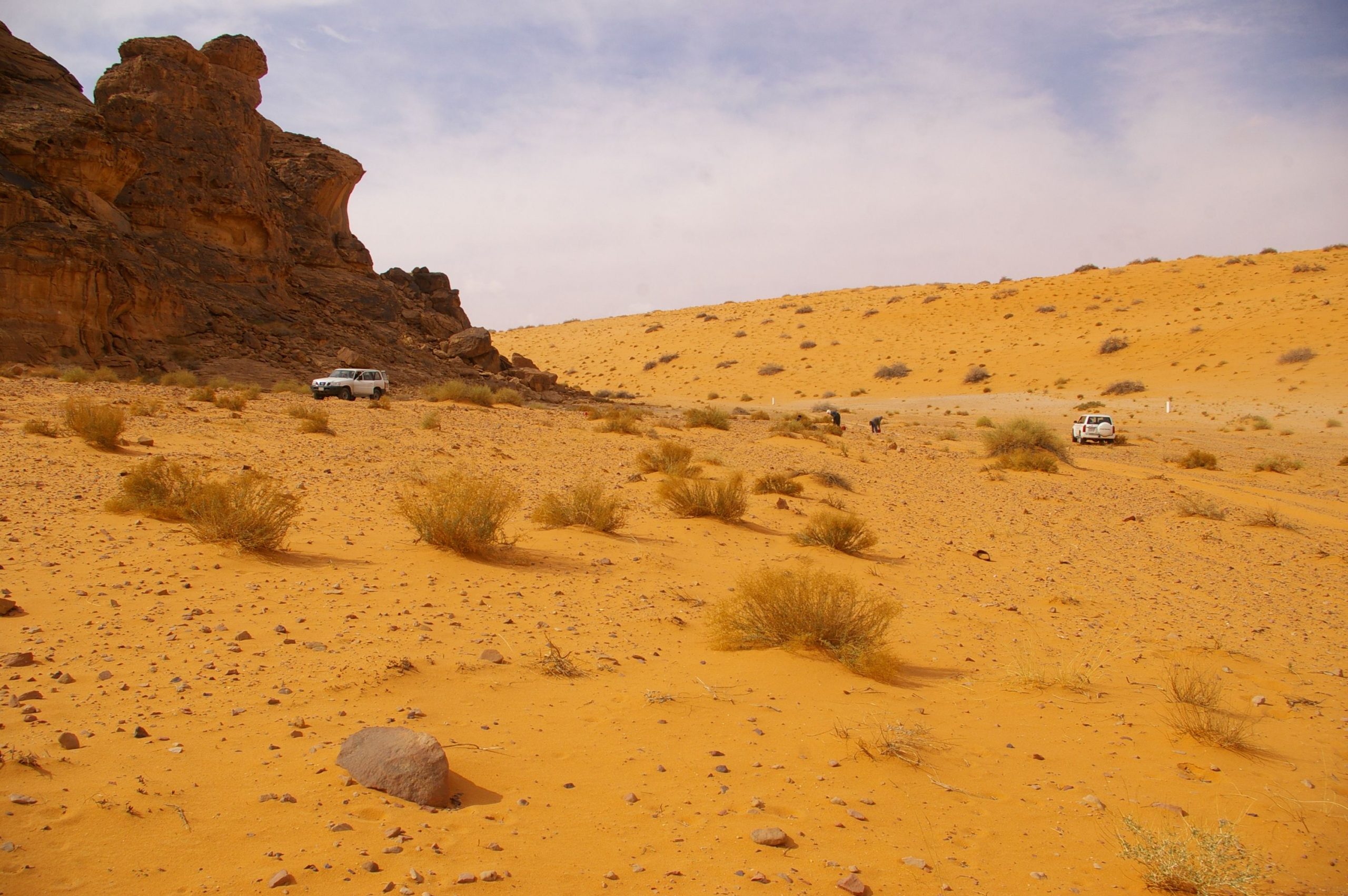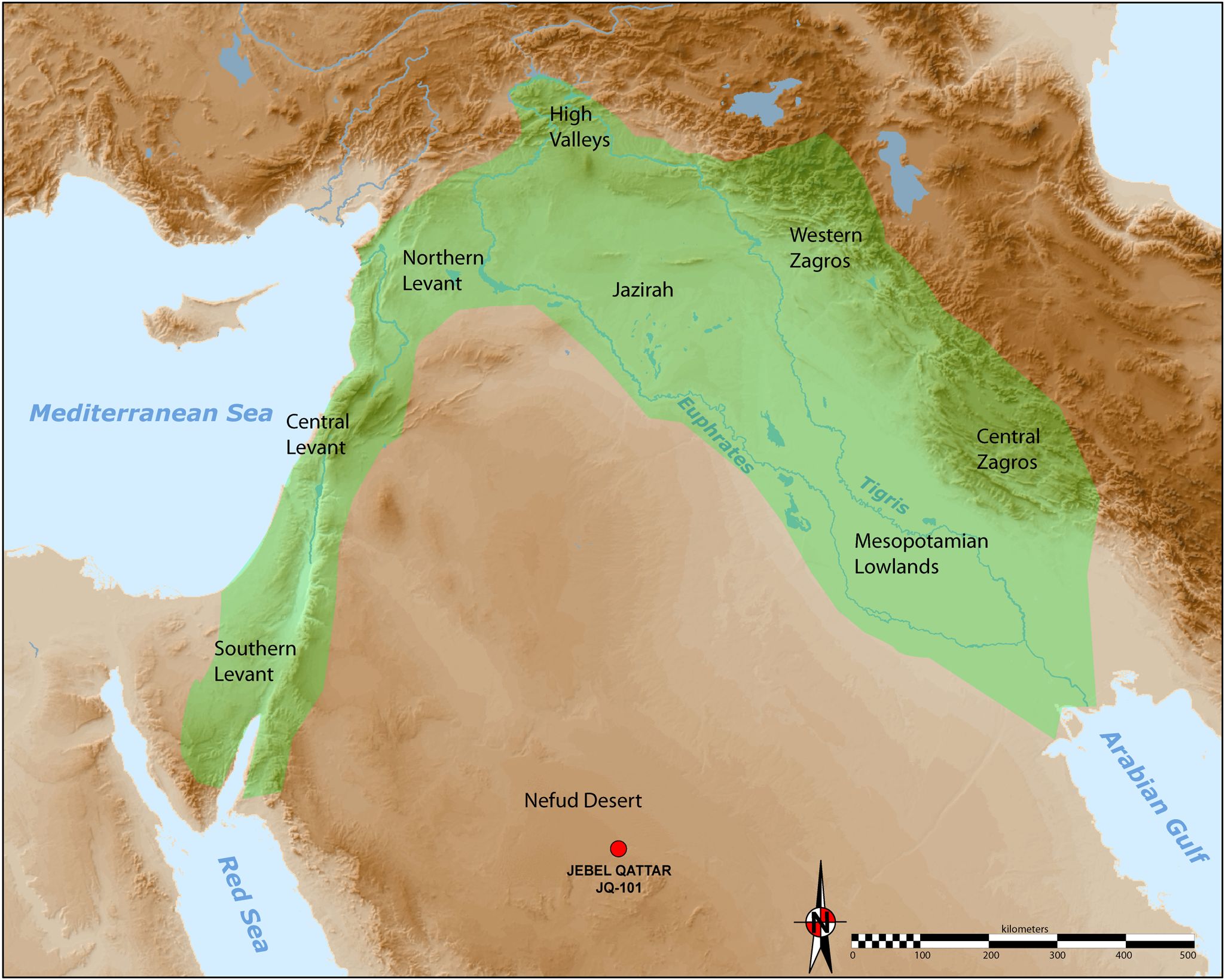What Early Neolithic People Left Behind: Levantine Arrowheads Found in Saudi Arabia
 Thinking about spending the summer in the sun and sand? Early Neolithic humans may have thought so too, although with more survival-oriented goals in mind. A recent study published in PLOS ONE suggests that early humans, who set up camp in the Eastern Mediterranean (about 10,000 BCE), may have traveled as far as Saudi Arabia in search of game and water.
Thinking about spending the summer in the sun and sand? Early Neolithic humans may have thought so too, although with more survival-oriented goals in mind. A recent study published in PLOS ONE suggests that early humans, who set up camp in the Eastern Mediterranean (about 10,000 BCE), may have traveled as far as Saudi Arabia in search of game and water.
In this study, researchers unearthed several types of Neolithic arrowheads in the northern peninsula of Saudi Arabia at the site of Jebel Qattar, which suggests a link between Neolithic people of the Levant—modern-day Jordan, Lebanon, Syria, Israel, Palestine, and Cyprus—to areas as far south as Saudi Arabia. Arrowheads and other tools are, by and large, the main type of early human artifact observable today prior to the introduction of pottery (about 7000 BCE), and are integral to our understanding of the people who created and used them. Tools and arrowheads types, like the ones discovered at Jebel Qattar, provide researchers with evidence of early technology used for hunting.

Accurately identifying early Neolithic artifacts is a tough job—these arrowheads are over 10,000 years old, after all—and requires researchers to carefully sift out other objects uncovered during surface collection and trench excavations. In fact, the researchers discovered a total of 887 stone tools at the site of Jebel Qattar, only ten of which have been identified as Levantine types, known more specifically to researchers as El-Khiam and Helwan points. Named for their places of origin in Israel and Egypt respectively, the El-Khiam and Helwan arrowhead types are common to Levantine sites throughout the Neolithic period. This study, however, represents the first time archaeologists have discovered them in the Nefud Desert of Saudi Arabia.
Current understanding of early people living during the Neolithic period is rooted in excavation sites in the Levant and the larger area of the Fertile Crescent—the area in green on the map above—a geographical region containing parts of Western Asia, including the Levant, as well as parts of the Nile Valley and Nile Delta of northeast Africa. The Fertile Crescent is home to several major innovations, including the domestication of animals and the development of cereal, and is often known as the ‘cradle of civilization’. The discovery of El-Khiam and Helwan arrowheads in Saudi Arabia alludes to this hotspot of innovation and technology and suggests possible interaction between these early Neolithic peoples.
However, because so little evidence from the Neolithic period survives intact today, our understanding of Neolithic peoples is a work-in-progress. Nevertheless, tracing Neolithic people from the Levant as far as Saudi Arabia suggests that we may want to study broader areas when considering their trajectory. Of course, there is further exploration to be done beyond the borders of the Levant.
Citation: Crassard R, Petraglia MD, Parker AG, Parton A, Roberts RG, Jacobs Z, Alsharekh A, Al-Omari A, Breeze P, Drake NA, Groucutt HS, Jennings R, Re´gagnon E, and Shipton C . (2013) Beyond the Levant: First Evidence of a Pre-Pottery Neolithic Incursion into the Nefud Desert, Saudi Arabia. PLOS ONE 8(7): e68061. doi: 10.1371/journal.pone.0068061
Images: doi: 10.1371/journal.pone.0068061

